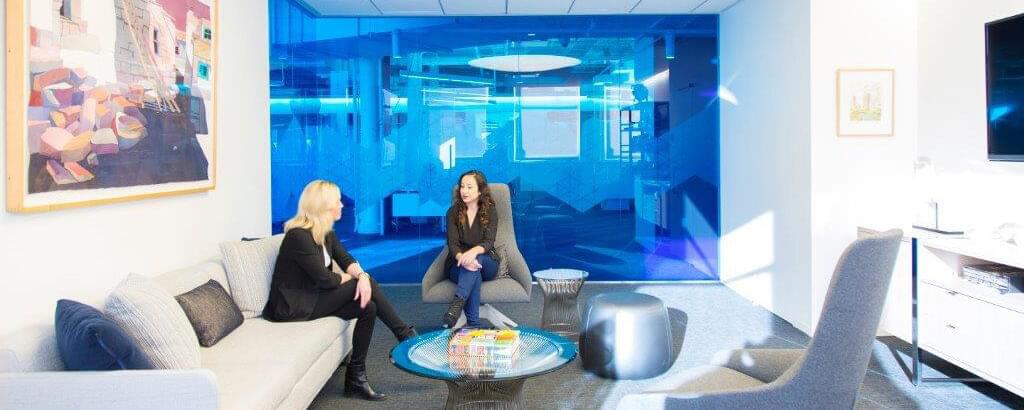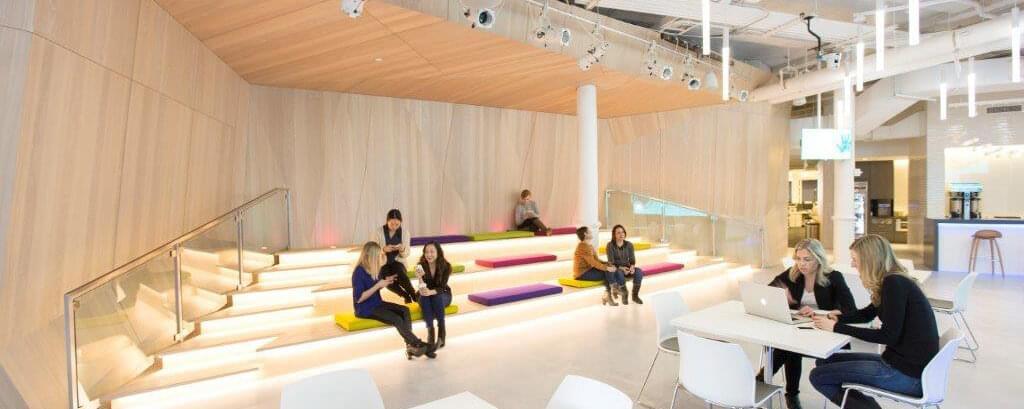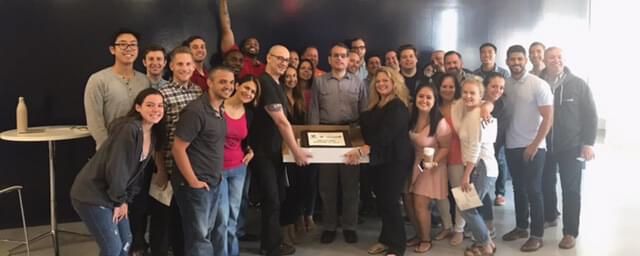‘I actually get emails from clients saying that they want to thank us for going back on Zendesk, that this is the best thing we ever did.’
– Stephanie Dorman
Senior VP of Client Services at Mediaocean
150+
Agents
26,000
Tickets/Quarter
+305%
Portal adoption
98
CSAT
Although paid advertising has changed dramatically over the years as marketing channels have multiplied across global markets, it remains one of the best ways to spread the word about new products and media content.
Today, the sea of options is made more navigable by Mediaocean, which offers brands, agencies and media sellers in 77 countries a platform and products to manage and coordinate the entire workflow – from planning to payment – across both traditional and digital ad spaces.
That breadth of reach – powering over $140 billion in media spending globally, serving more than 80,000 users – requires the company to have a strong support backbone. Heading up this effort is Stephanie Dorman, Senior Vice-President of Client Services. ‘A lot of what we do is consultative. Our clients want to know how to use our system in the best possible way,’ she explained.
Support agents must understand clients’ specific goals – a monumental undertaking considering that the Client Services team handles an average of 26,000 tickets each quarter, 50% of which are submitted by email. To meet this volume, Dorman oversees a distributed team of 150 customer-service specialists, who provide cross-platform and technical support 24 hours a day, 5 days a week, from 10 of their 14 offices around the globe.

Her still-growing team has doubled in size due to rapid growth and acquisitions since Mediaocean first implemented Zendesk Support in 2012. At the time, the company had been newly formed through a merger, and Dorman set out to blend two support teams and roll out a new, single customer-service solution. It needed to be affordable and easy to implement.
The team considered 10 options before selecting Zendesk Support, which stood out for its clean user interface and the efficiency allowed by the software. ‘We saw a greater ROI in Zendesk versus the other options. We did a cost analysis and showed how we were going to save money and increase productivity with Zendesk,’ Dorman recalled.
At first, the implementation was challenging, which led Dorman to team up with a Zendesk customer-success executive to help overcome obstacles and create a strategy to ensure successful deployment. ‘I needed somebody who was going to facilitate results, and that’s exactly what happened,’ Dorman said. ‘We were very happy, because both our internal users and our clients loved the product.’

By building a strong collaborative partnership with Zendesk in those early days, Mediaocean and Zendesk forged a relationship that, five years later, is still going strong. With happy agents and happy clients, Dorman’s team continued to grow and her positive experience with Zendesk was further extended via Zendesk’s Service Leadership Forum, where she was able to share and exchange experience and knowledge with peers. On the product side, the team had integrated SnapEngage and Talkdesk to provide an omnichannel agent experience and to capture all customer contacts in Zendesk.
But more changes were ahead: Mediaocean was acquired and given a mandate to move to a prominent CRM provider. Though reluctant to switch, Dorman and her team stayed positive and objective. Yet the first inkling of trouble with the rollout came during the implementation process. She explained, ‘The other system had some strengths, but for us, it was complicated and incredibly expensive. Every time we turned around, there was another unanticipated customisation or charge.’
These added costs included hiring a dedicated administrator to manage the tool full time. Meanwhile, case-collision issues were reducing agents’ productivity. Dorman explained, ‘This was a big deal because we’re very collaborative. We do a metric on ‘average number of tickets closed per day, per rep’, and this was declining because people were spending so much extra time on the process part of it.’

The system change also had an impact on the client experience. Dorman said, ‘Our web portal usage dropped by 75% the first quarter after we went live, which meant that more calls were coming into our support desk. Our clients were saying that we didn’t have what they needed any more.’
An analysis of feedback from agents and clients indicated that many of the issues they faced involved the new system. Dorman also discovered that the vendor considered Mediaocean too small to be a priority. At the same time, a matrix that she and her team created to compare Zendesk against its replacement revealed that 90% of what they needed was available out of the box in Zendesk, but required costly, time-consuming configuration or customisation from the other provider.
Even armed with this data, Dorman doubted that Mediaocean would approve a return to Zendesk. She explained, ‘We had spent a lot of money to make the change. But the more we went through the process, the clearer it became that we needed to go back. We’re eating many hundreds of thousands of dollars to move back because we still have two years left on our contract.’

Dorman and her team were able to make their case, and when the decision was announced, everyone at Mediaocean cheered. Dorman said, ‘They literally stood up and clapped. It wasn’t just support – it was our account management team, our HR team. We were so happy, and immediately kicked off the implementation process.’
Mediaocean was back up and running on Zendesk in two months’ time, by August 2017. ‘We went live without a hitch. That was above and beyond expectations. As a fellow software company, we expect there to be a few challenges. But this was a seamless process,’ she said.
Starting afresh gave Mediaocean a chance to improve its previous configuration and processes. Both clients and internal agents are now using a knowledge base powered by Zendesk Guide. From the Zendesk Apps Marketplace, the team uses the CloudSET app to track 6 ticket-component levels with thousands of possible combinations, as well as manage client SLAs.

Dorman and her team further extended Zendesk with powerful integration between Salesforce and Support, with the help of Azuqua, one of Zendesk’s preferred data-synchronisation partners. Azuqua’s integration platform makes it easy to connect and deploy data between systems without the maintenance and overhead of IT admins. Mediaocean is also building a complex integration with JIRA – something the team hadn’t been able to accomplish before.
‘We love our integrated tools, and the portal is probably most important for me because we have invested a lot into building a knowledge base for our clients and our internal team,’ said Dorman.
There are more success metrics in this story about delivering great experiences. Employee satisfaction, which had dropped by 20 points when Mediaocean moved away from Zendesk, has since risen by 40 points. Dorman noted that returning to Zendesk had a direct impact on agents’ morale, and they particularly enjoy the clean ticketing interface and inline editing capability. With a satisfied team and user-friendly tools, Mediaocean maintains an agent attrition rate of less than 3% and can provide new staff with a knowledge base that helps strengthen and speed up the onboarding experience.

‘We use our internal knowledge base to give our new people extra information that can help them as they go through onboarding,’ she said. On the client side, the team has built up a library of e-learning videos. Dorman noted, ‘A lot of the time, our clients don’t have the level of detail about a product to narrow a search. So we were able to build out the videos and other learning collateral very easily through Zendesk Guide without any extra resources or money, and our clients can easily navigate to what they need.’
Mediaocean saw its CSAT score increase immediately, from 95% to 98%, and clients returned to the company’s portal. Dorman said, ‘Our portal adoption went up by 305% in six weeks without us doing anything. I didn’t expect to see that level of re-adoption so quickly. That to me was just a big added plus, like icing on the Zendesk cake.’
Dorman knows first-hand that not every client experience is perfect and that how a company responds makes all the difference. She explained, ‘We call back on almost every single piece of negative feedback that we get. Our CSAT is very high, so it’s manageable. In our monthly client-reporting metric package, we provide full transparency into all negative feedback that we’ve received and what we did about it. That goes a long way with our clients.’
Related stories
Retail, Wholesale & Distribution




